California Makes Doctor Shopping Harder
On Sept. 15, California became the 25th U.S. state to turn to the Internet in an effort to make it much more difficult for drug-seekers to procure prescriptions from multiple doctors. Kentucky became the first state to establish such a program when it launched the Enhanced Kentucky All Schedule Prescription Electronic Reporting (eKASPER) program in 2005.
In his announcement that the state had upgraded the Controlled Substance Utilization Review and Evaluation System (CURES) from a mail-and-fax format to an online database, California Attorney General Jerry Brown cited recent high-profile drug-related deaths as well as increases in efforts to illicitly acquire prescription medication.
“The recent deaths of Anna Nicole Smith and Michael Jackson have made clear to the whole world just how dangerous prescription drug abuse can be,” Brown said. “Today, my office is inaugurating a high-tech monitoring system that will enable doctors and law enforcement to identify and stop prescription drug-seekers from doctor shopping and abusing prescription drugs.”
Not a New Concept
As is indicated in the “Frequently Asked Questions” section of the California Department of Justice (CDOJ) website, the effort to track prescription drug use and abuse is hardly a new concept in the state of California:
CURES evolved from California’s triplicate prescription program, created in 1940 to monitor schedule II controlled drugs (including morphine, OxyContin and methadone) using duplicate prescription pads.
In 1996, CURES was established as a pilot project by the California Board of Pharmacy.
The Pain Treatment and Drug Diversion Prevention Act of 2003 made CURES a permanent program.
A Sept. 15 Daily News Wire Service article reported that the online version of the database will significantly enhance the efforts of those who are charged with preventing prescription medications from ending up in the wrong hands:
The database replaces a system that required mailing or faxing written requests for information. More than 60,000 such requests are generally made to the Attorney General’s Office every year, according to Brown.
Brown said the new database will make it easier for doctors to track patients’ prescription drug histories by giving them instant access to controlled-substance records.
Each database record contains a patient’s drug record, including the name of the drug; date the prescription was filled; quantity, strength and number of refills; pharmacy name and license number; doctor’s name and [Drug Enforcement Administration] number; and prescription number.
Instant Access for Authorized Officials
The Office of the Attorney General website reports that providing online access to CURES “will make it much easier for authorized prescribers and pharmacists to quickly review controlled substance information in an effort to identify and deter drug abuse and diversion through accurate and rapid tracking of Schedule II through IV controlled substances.”
The online database allows the following individuals to access real-time data regarding patients’ past possession and use of controlled substances:
Licensed healthcare prescribers eligible to prescribe controlled substances,
Pharmacists authorized to dispense controlled substances,
Law enforcement officials and
Members of regulatory boards.
Social & Economic Benefits
The CDOJ website identifies the following social and economic results as among the benefits of establishing an online version of the CURES program:
Reducing drug trafficking and the abuse of dangerous prescription medications, both of which often result in injury or death.
Decreasing direct financial losses to healthcare providers, hospitals and pharmacies that waste time and lose productivity when patients doctor shop to feed their drug addiction or engage in other types of criminal activity.
Limiting lost productivity to employers, employee lost wages and drug rehabilitation expenses that result from prescription drug abuse and addiction.
Lowering the number of hospital emergency room visits that are attributed to the misuse, abuse and overdose of prescription medications.
“We have so [many drugs] moving on the streets and we have so much moving in doctors’ suites, and we have to attack both,” Brown said in a Sept. 15 article by Associated Press writer Shaya Tayefe Mohajer.
As evidence of the extremes some drug users will go to acquire prescription medications, Mohajer reported that among those arrested in 2008 was a 53-year-old man whose doctor shopping for prescription painkillers included visits to 183 doctors and 47 pharmacies.
















